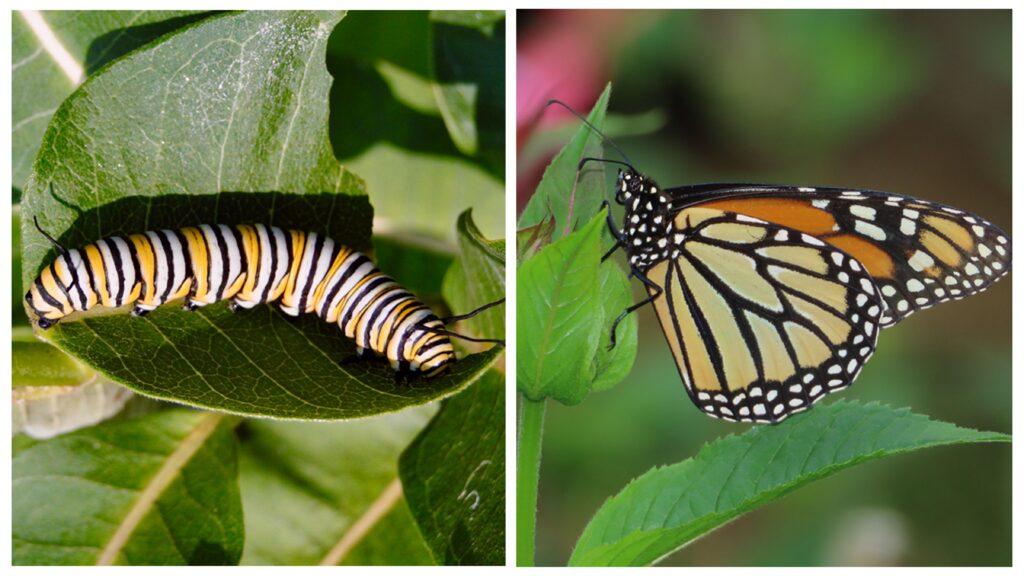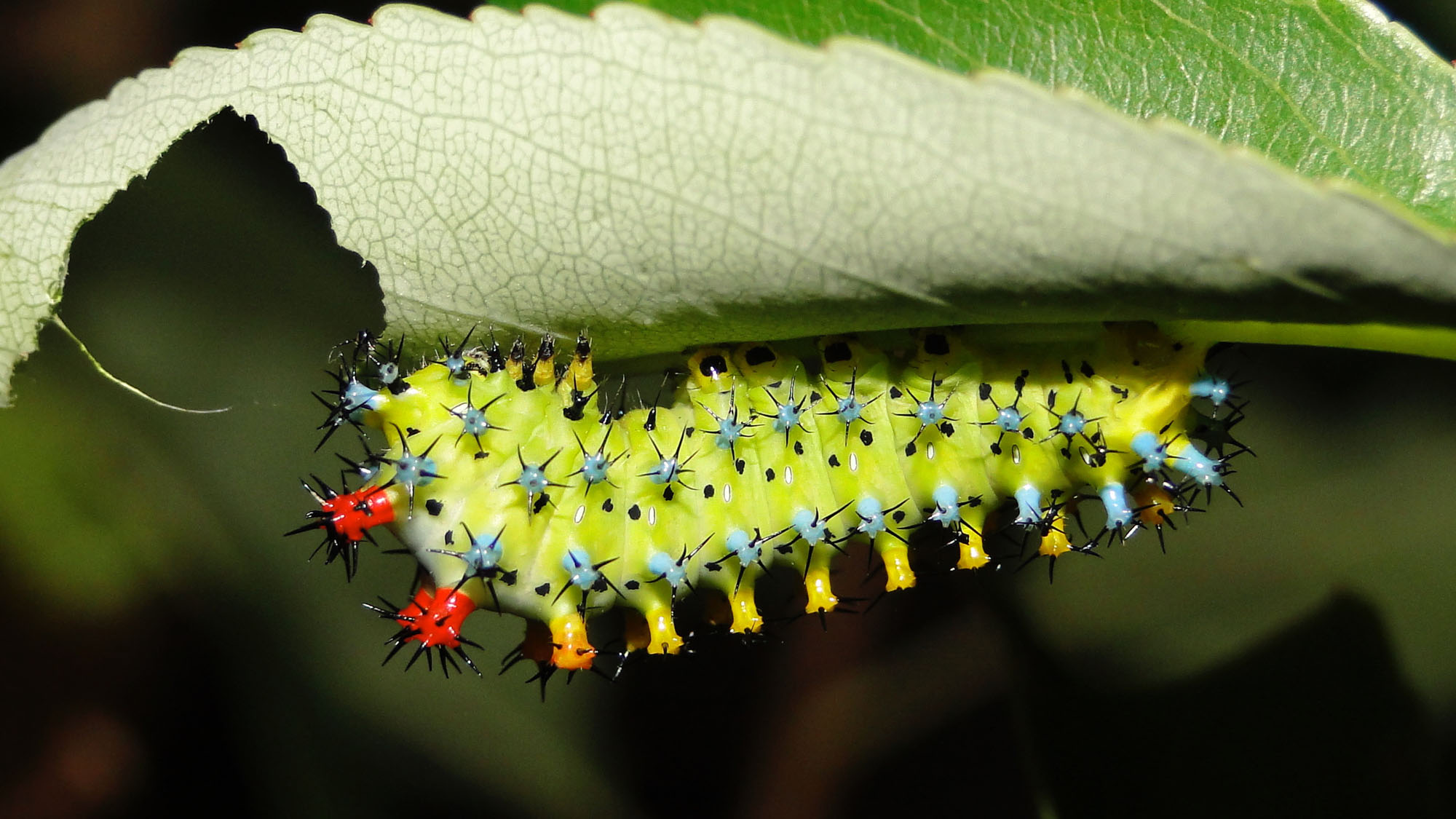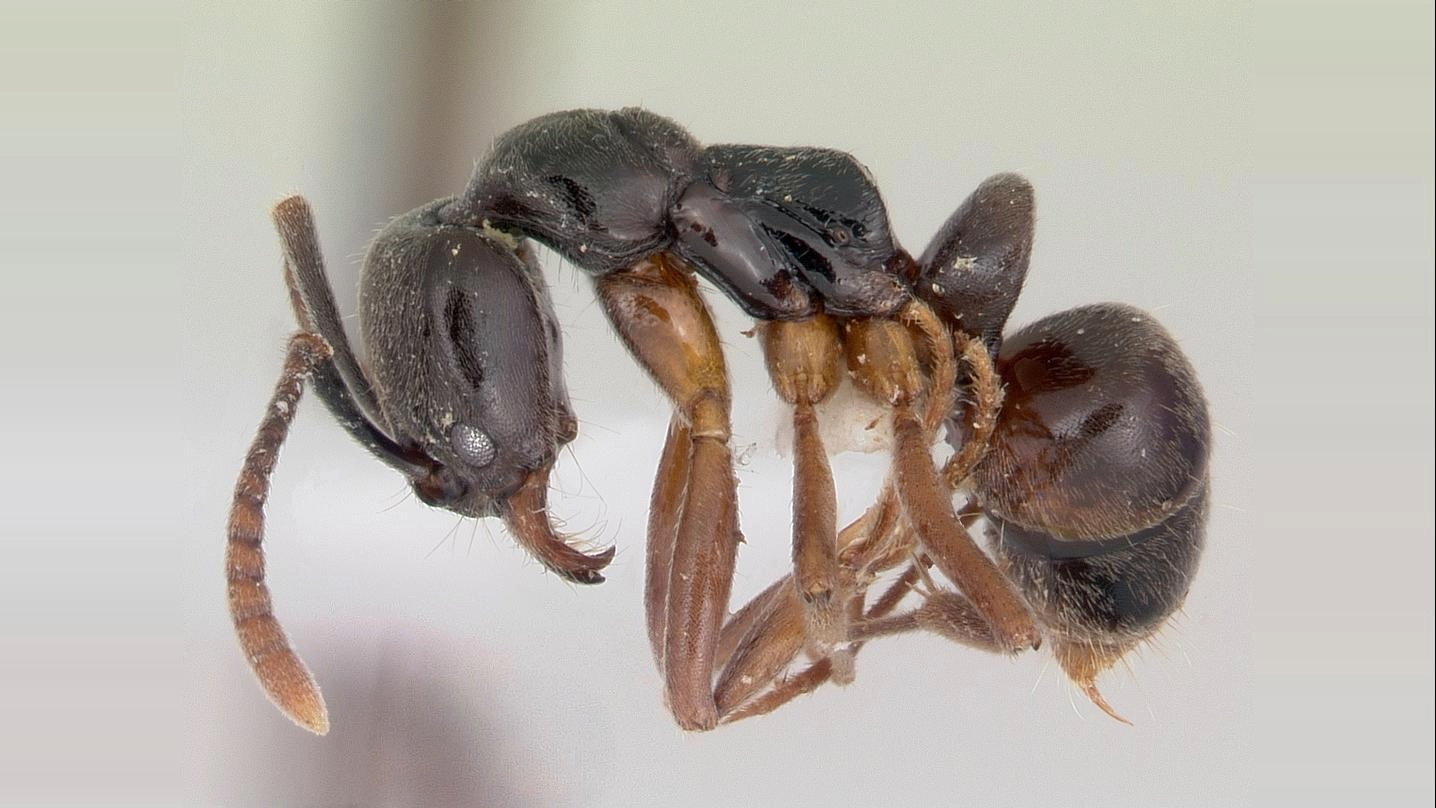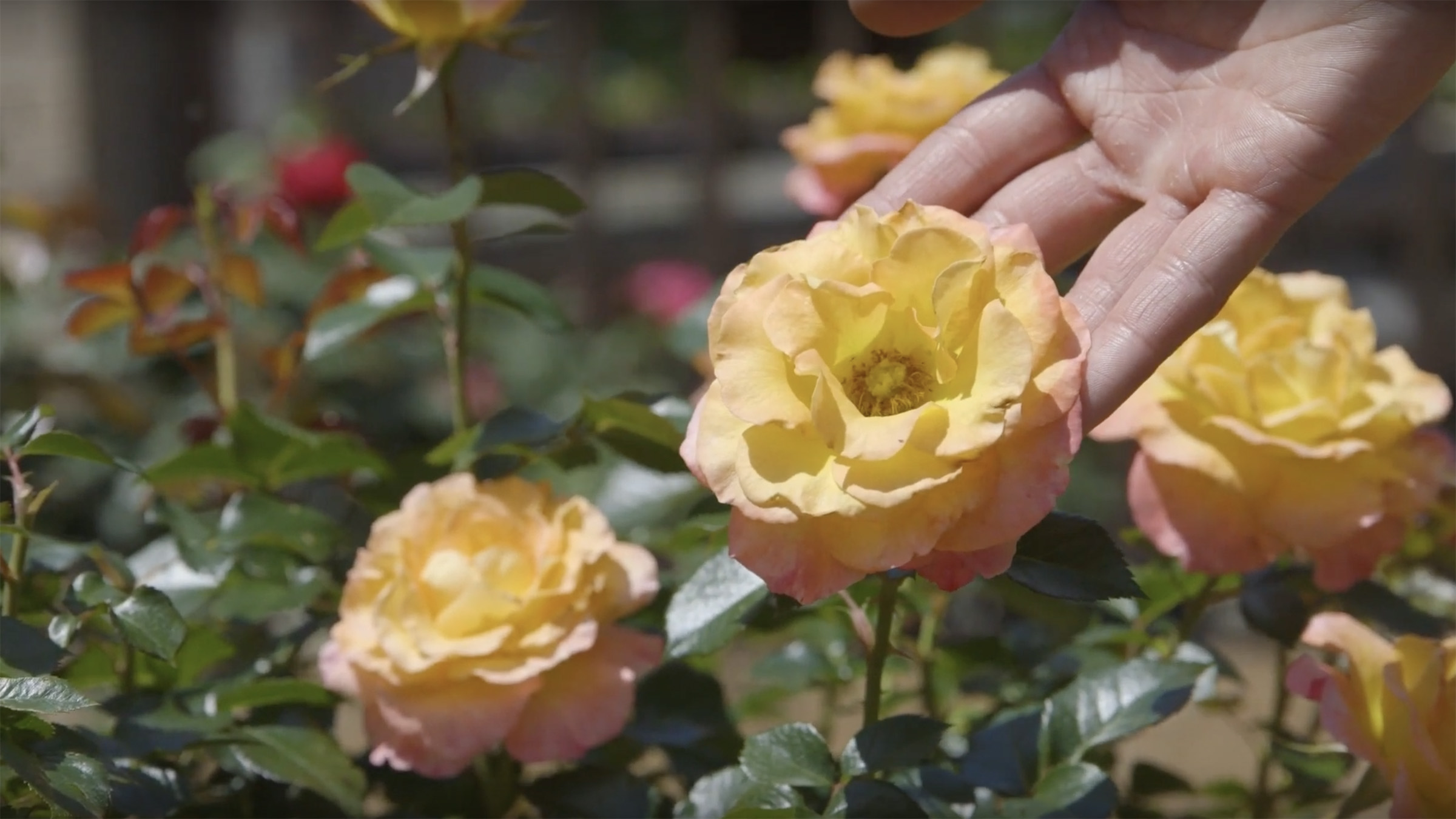North Carolina is home to nearly 3,000 species of caterpillars. Before you grab the pitchforks and pesticides, consider that only about 3% of caterpillars are garden pests. Not to mention that caterpillars are baby butterflies and moths, and who doesn’t want more beautiful butterflies in their garden!
Caterpillars are in fact insects – they have six “real legs” at the front, and between four and 10 “fake legs” at the back end of their bodies.
Caterpillars are the larva stage of the butterfly or moth life cycle, and their one job is to eat, eat, eat. If you’ve ever thought to yourself that caterpillars really love munching on a particular plant (or plants) in your garden, you’re not imagining things. Caterpillars often rely on native host plants — the plants on which butterfly females lay eggs — as their sole source of food.
The good news? Their feeding typically doesn’t harm plants in the long run, though in large enough numbers they can cause severe defoliation. Skip ahead to control measures.
These crinkly critters are unable to travel long distances, so their moms take great care to lay eggs on just the right plants. In the case of monarch caterpillars, for example, they feed exclusively on milkweed plants. So if you want big, beautiful butterflies in your garden, you might want to think twice before shooing away their babies.
Learn more about these eccentric, ecologically valuable insects with Clyde Sorenson, entomology expert at NC State, in this edition of Homegrown In the Garden! Flutter on over to our Butterflies in Your Backyard guide for detailed steps to create a butterfly habitat at home.
Living a Double Life

Caterpillars are found in almost every community across North Carolina. While they’re most prevalent — or visible at least — in spring and summer, different species of caterpillars are active during different times of the year.
While there’s no surefire way to know if a caterpillar will become a butterfly or a moth just by looking at them, it’s a safe bet that extra hairy or “spiky” caterpillars will be moths.
Caterpillars, which are full of protein, fat and water, are key contributors to ecosystems as an essential food source for birds and other wildlife. They also help to regulate plant populations and play an important role in nutrient cycling (i.e., ecological recycling). Perhaps most importantly, adult caterpillars — moths and especially butterflies — are vital pollinators, meaning they help fertilize plants by spreading pollen so the plants can reproduce.
A Few Bad Apples
On Monday, they ate through your apple tree, but they were still hungry. On Tuesday, they ate through your oak trees, but they were still hungry… If you’ve experienced this version of the story and are having issues with caterpillar populations at home, refer to Caterpillars That Feed on Trees and Shrubs for guidance on controlling specific species.
The vast majority of caterpillar species are not pests, and a single feeding by caterpillars will seldom harm a healthy tree or shrub. Repeated defoliation, however, may make them more susceptible to other issues such as insects, diseases or severe weather.
Before taking action, particularly with pesticides, try to confirm the culprit’s identity so you can better target your control method. Contact your local N.C. Cooperative Extension center for personal assistance.
- Categories:



